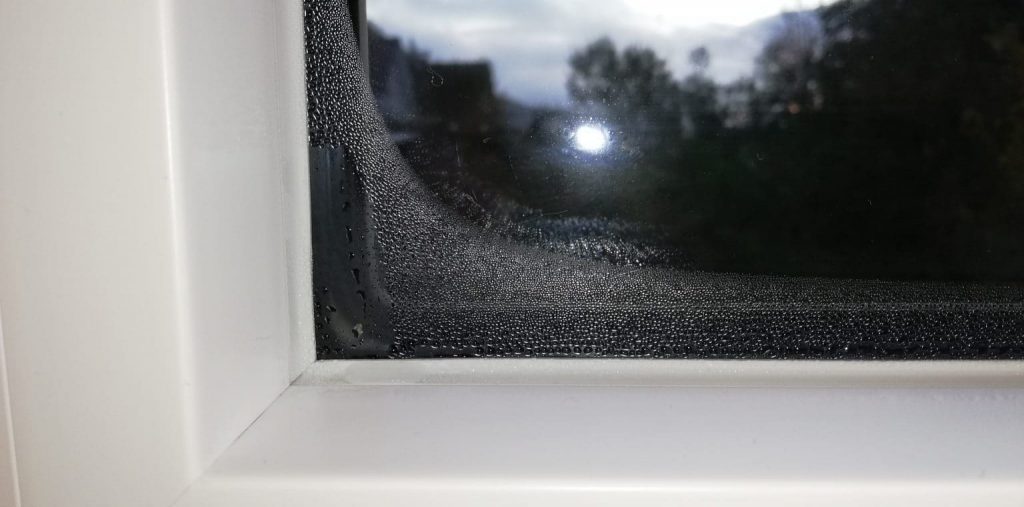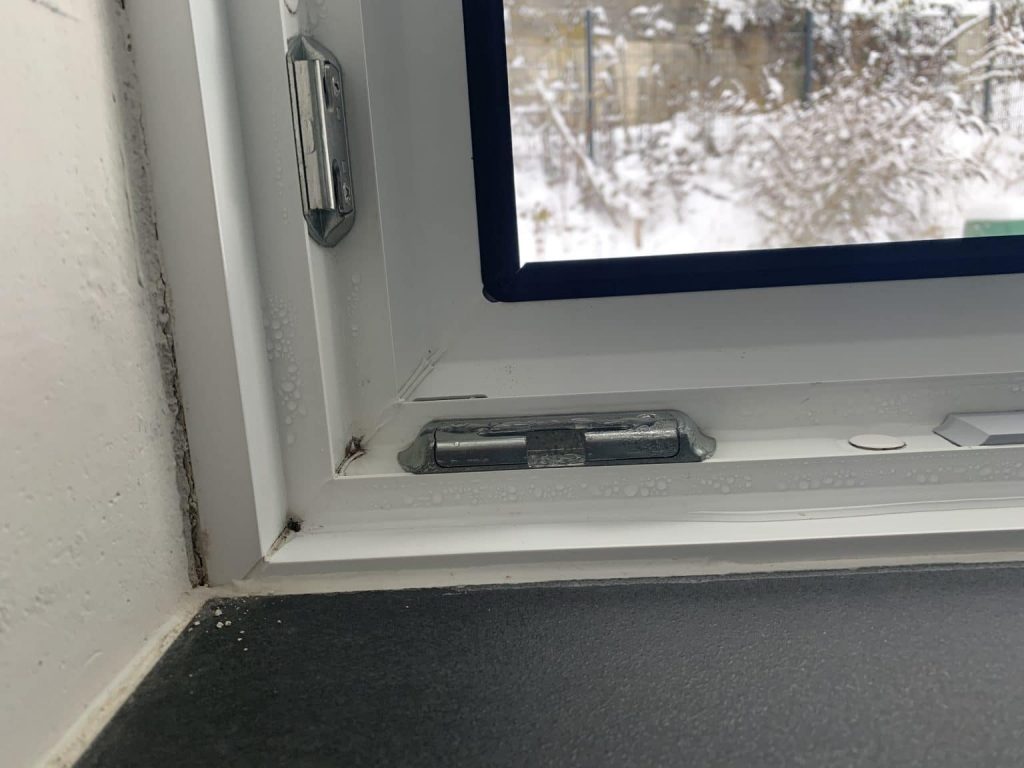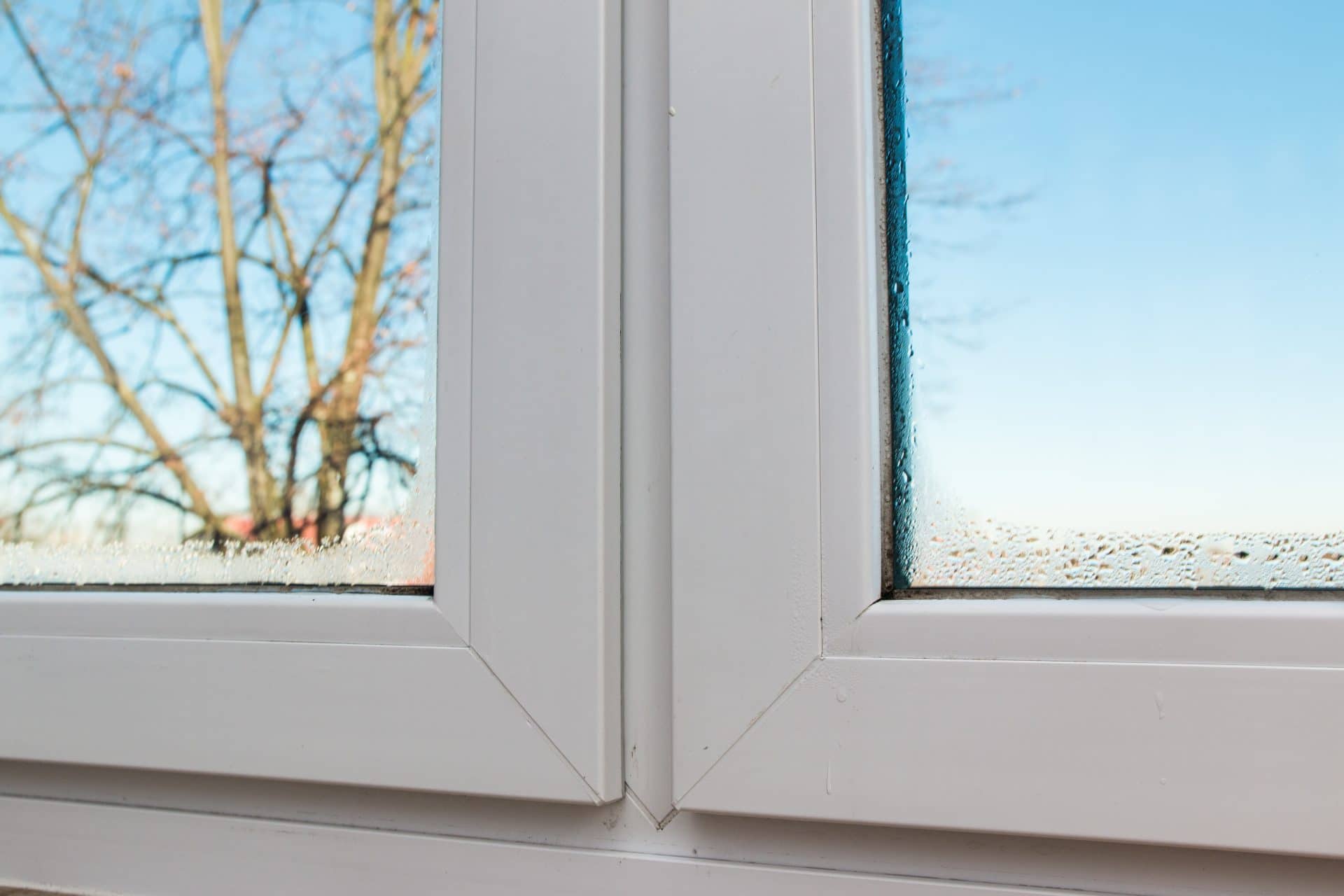Condensation tends to form on windows and doors, especially in the colder months. This condensation is unattractive and can cause mould (if settled in the corners and on the surrounding wall over a long period). Please keep reading to find out what condensation is, what causes it and how to prevent this.
Causes of Condensation
Condensation or condensed water forms when humid air meets cold surfaces, and the dew point is reached when cooled. To put it more precisely, this means that there is always a certain degree of humidity inside a room. This humidity is caused, among other things, by the daily use of living space. A Graz University of Technology study showed that an average household uses 5-10 litres of water per day through cooking, bathing, watering plants, or even breathing!
Warm air can generally absorb more moisture than colder air. If the warm air from the inside hits a cold surface, the air cools down quickly. Since cold air cannot carry the moisture, the humidity falls out as condensate or dew water. As a result, the cold surfaces get wet, which is referred to as condensation, dew or condensation water. Condensation occurs especially during colder months due to high temperature differences between the indoors and outdoors. This means that condensation occurs on well-insulated windows during the colder season.

Where Does Condensation Occur?
Condensation can occur on windows and doors, especially on:
• The glazing inside
• At the seals
• In the glass or functional rebate
• Outside of the glass
• In the area of the window/wall termination
Condensation can occur regardless of the window material, whether plastic or wood. Depending on where the condensation forms, it appears differently and can be classified according to its intensity and frequency.

Misconception: Condensation is Bad!
Many windows and door owners are often at a loss when faced with condensation. In most cases, the condensation is not caused by a defect but by a physical phenomenon. This action is particularly common with new windows. If new windows were installed in a new building or window replacement, they would be airtight. This tightness means that air circulation is prevented, which keeps the humidity in the room, and condensation can form on windows and doors. The good news is that most of the time, condensation can be counteracted with a few simple steps.
How to Prevent Condensation Forming on Your Windows and Doors:
The most effective method against condensation on windows is airing them out. The entire air volume exchange takes place in a short time when the windows are fully open. We have summarised what you should pay attention to when ventilating properly during the cold season. Owners of new windows with very good thermal insulation or triple glazing should pay particular attention to regular airing. Ideally 5-10 minutes, several times a day.

If the windows continue to fog up, despite proper ventilation, you should under no circumstances ignore this. The cause could also be leaking, such as damaged or porous seals, which form a cold or heat bridge. This can have unpleasant side effects, such as a high loss of energy or mould growth in the long run. We recommend notifying a window service team and obtaining professional and expert advice. A service technician will inspect your windows and rectify the cause if necessary.
For more information and advice contact a friendly member of the Internorm team.
Sources:
- Research Report NO. B13.105.003.702, BUILDING.CLIMATE.ANALYSIS, TU Graz
- Fenster-plattform.at : Quality Windows. Made in Austria. Condensation information sheet: Condensation formation on windows and doors
- Window manufacturer.at: Windows and condensate formation – is our window construction still up to date?
- Efficiency House Online: Condensation on the window: you can do that
